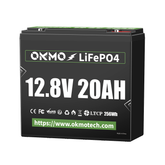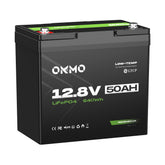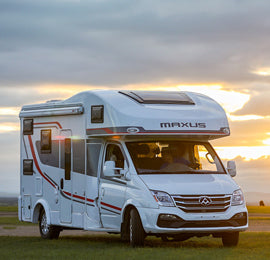LiFePO4 Temperature Range: Discharging, Charging, and Storage

LiFePO4 (Lithium Iron Phosphate) batteries are widely recognized for their safety, long cycle life, and excellent thermal stability. However, temperature plays a critical role in their performance, lifespan, and overall efficiency. Understanding the optimal temperature ranges for discharging, charging, and storage is essential to maximize the battery's lifespan and ensure reliable operation.
1. Temperature and LiFePO4 Battery Lifespan
LiFePO4 batteries are designed to operate within specific temperature ranges. Exceeding these ranges can accelerate degradation, reduce capacity, and shorten the battery's lifespan. Here’s how temperature impacts each phase of the battery’s lifecycle:
Discharging Temperature Range
-
Optimal Range: -20°C to 60°C
-
LiFePO4 batteries can discharge efficiently within this range, making them suitable for a variety of environments.
-
At lower temperatures (below -20°C), the battery’s internal resistance increases, reducing its ability to deliver power.
-
At higher temperatures (above 60°C), the battery may experience accelerated degradation, leading to a shorter lifespan.
-
Charging Temperature Range
-
Optimal Range: 0°C to 45°C
-
Charging within this range ensures safe and efficient energy absorption.
-
Charging below 0°C can cause lithium plating, which damages the battery and reduces its capacity.
-
Charging above 45°C increases the risk of thermal runaway and accelerates chemical reactions that degrade the battery.
-
Storage Temperature Range
-
Optimal Range: -20°C to 45°C
-
Storing LiFePO4 batteries within this range minimizes capacity loss and extends shelf life.
-
High storage temperatures (above 45°C) can cause irreversible capacity loss due to increased self-discharge and chemical instability.
-
Low storage temperatures (below -20°C) are generally safe but may temporarily reduce performance until the battery warms up.
-

2. Impact of Temperature on Lifespan
The lifespan of a LiFePO4 battery is typically measured in charge-discharge cycles. Temperature extremes can significantly reduce the number of cycles a battery can endure.
High Temperatures
-
At temperatures above 60°C, the battery’s electrolyte can break down, leading to gas formation and swelling.
-
High temperatures accelerate the degradation of the cathode and anode materials, reducing the battery’s capacity over time.
Low Temperatures
-
At temperatures below -20°C, the battery’s internal resistance increases, reducing its ability to deliver power.
-
Prolonged exposure to low temperatures can cause mechanical stress on the battery’s internal components, leading to micro-cracks and reduced performance.
3. Graphical Representation of Temperature vs. Lifespan
The following chart illustrates how temperature affects the lifespan of a LiFePO4 battery:
Temperature vs. Cycle Life
| Temperature (°C) | Cycle Life (Relative to Optimal) |
|---|---|
| -20 | 80% |
| 0 | 95% |
| 25 | 100% |
| 45 | 85% |
| 60 | 70% |
| 70 | 50% |
Chart Explanation:
-
At 25°C, the battery achieves its maximum cycle life (100%).
-
As temperatures rise above 45°C, the cycle life decreases significantly due to accelerated degradation.
-
At -20°C, the cycle life is reduced to 80% due to increased internal resistance and reduced efficiency.
4. Best Practices for Temperature Management
To maximize the lifespan of LiFePO4 batteries, follow these best practices:
-
Discharging: Avoid operating the battery at temperatures below -20°C or above 60°C. Use insulation or heating pads in cold environments.
-
Charging: Always charge within the 0°C to 45°C range. Use a battery management system (BMS) to monitor temperature and prevent overcharging.
-
Storage: Store batteries at 50% charge in a cool, dry place (ideally between 10°C and 25°C). Avoid prolonged exposure to high temperatures.
 Temperature is a critical factor in the performance and lifespan of LiFePO4 batteries. By operating, charging, and storing the battery within its optimal temperature ranges, users can ensure maximum efficiency, safety, and longevity. Whether used in electric vehicles, marine applications, or renewable energy systems, proper temperature management is key to unlocking the full potential of LiFePO4 technology.
Temperature is a critical factor in the performance and lifespan of LiFePO4 batteries. By operating, charging, and storing the battery within its optimal temperature ranges, users can ensure maximum efficiency, safety, and longevity. Whether used in electric vehicles, marine applications, or renewable energy systems, proper temperature management is key to unlocking the full potential of LiFePO4 technology.Chart:
Cycle Life (%)
100 | *
90 | *
80 | *
70 | *
60 | *
50 | *
40 | *
30 | *
20 |*
10 |___________________________
-20 0 25 45 60 70 (°C)
By adhering to these guidelines, users can ensure their LiFePO4 batteries deliver reliable performance for years to come. 🔋⚡










